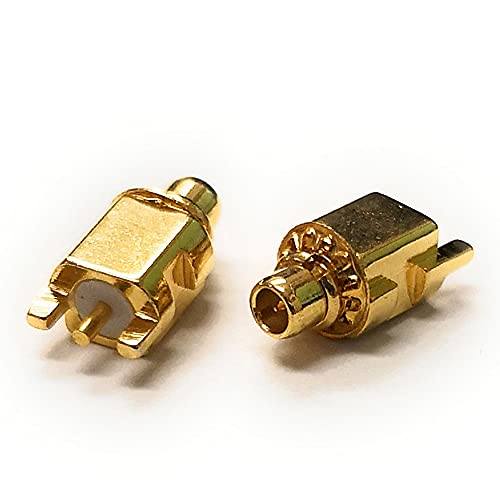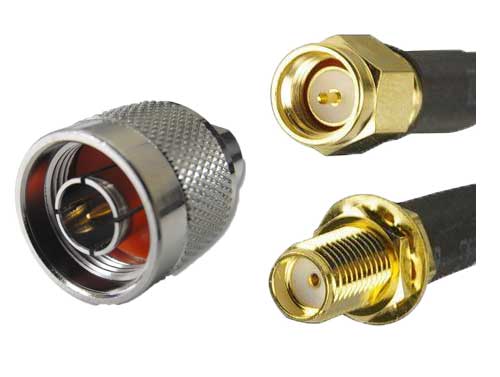The Evolution of MMCX Connectors: History, Standards, and Applications

Introduction
In the realm of radio frequency (RF) and microwave engineering, connectors play a pivotal role in ensuring signal integrity and system reliability. Among the myriad of RF connectors, the MMCX (Micro-Miniature Coaxial) connector stands out for its compact design, high-frequency performance, and widespread adoption across various industries. This article delves into the history, standards, and applications of the MMCX connector, highlighting its significance in modern communication systems.
Historical Background
The MMCX connector was developed in the 1990s as a smaller alternative to the MCX connector. It was designed to provide consistent performance from DC to 6 GHz while offering a significant size reduction compared to MCX connectors. The MMCX connector is standardized under the European CECC 22000 specification Wikipedia.
Technical Specifications
- Impedance: 50 ohms
- Frequency Range: DC to 6 GHz
- Coupling Mechanism: Snap-on
- Outer Diameter: Approximately 2.4 mm
- Durability: Rated for up to 500 mating cycles
- Temperature Range: −55°C to +165°C
- Voltage Rating: 170 Volts RMS Continuous
- Dielectric Withstanding Voltage: 500 VRMS Max
- VSWR (Return Loss):
- DC – 4 GHz: 1.25 (-19 dB) Max
- 4 – 6 GHz: 1.40 (-16 dB) Max
- Insertion Loss: 0.1 √(f(GHz)) dB Max
- Power Handling: Up to 60W at 1 GHz in continuous wave mode radiall.com.
Design and Compatibility
The MMCX connector features a snap-on coupling mechanism, allowing for quick and reliable connections. It shares the same inner contact and insulator dimensions as the MCX connector but is significantly smaller, making it suitable for applications with space constraints. The connector is available in both 50-ohm and 75-ohm versions, catering to various system requirements Samtec.
Applications
MMCX connectors are widely used in various industries due to their reliability and performance:
- Telecommunications: Used in radio and television broadcasting equipment.
- Test and Measurement: Found in oscilloscopes, signal generators, and other RF testing equipment.
- GPS Systems: Commonly used to connect external antennas to GPS receivers.
- Consumer Electronics: Employed in devices like USB DVB-T tuners and software-defined oscilloscopes.
- Automotive: Integrated into vehicle communication systems.
- Medical Equipment: Used in devices like ECG machines for signal transmission.
- Audio Equipment: Utilized in in-ear monitors to connect cables to individual earpieces, allowing for cable replacement or swapping Wikipedia.
Advantages of MMCX Connectors
- Compact Size: Ideal for applications with space constraints.
- High-Frequency Performance: Maintains signal integrity up to 6 GHz.
- Quick Connect/Disconnect: The snap-on coupling mechanism allows for easy and secure connections.
- Versatility: Suitable for both analog and digital signal transmissions.
- Cost-Effective: Offers reliable performance at a reasonable cost.
Considerations for Use
While MMCX connectors offer numerous benefits, certain considerations should be kept in mind:
- Mating Cycles: Limited to approximately 500 cycles; excessive mating can degrade performance.
- Impedance Matching: Ensure the connector’s impedance matches the system’s requirements to prevent signal reflection.
- Environmental Conditions: Designed to operate in a wide temperature range, but proper sealing may be required for harsh environments.
Global Sourcing and Shipping Advantages
For businesses and engineers sourcing MMCX connectors, Shipping to Japan where tariffs are cheaper than China presents a strategic advantage. Japan’s favorable trade agreements and lower import duties can result in cost savings and streamlined logistics, making it an attractive destination for procuring high-quality RF components.
Conclusion
The MMCX connector’s enduring presence in the RF industry is a testament to its robust design and adaptability. From its origins in the 1990s to its widespread use in modern communication systems, the MMCX connector continues to be a cornerstone in ensuring reliable and efficient signal transmission. As technology advances and the demand for high-frequency applications grows, the MMCX connector’s relevance and utility are poised to remain strong.







